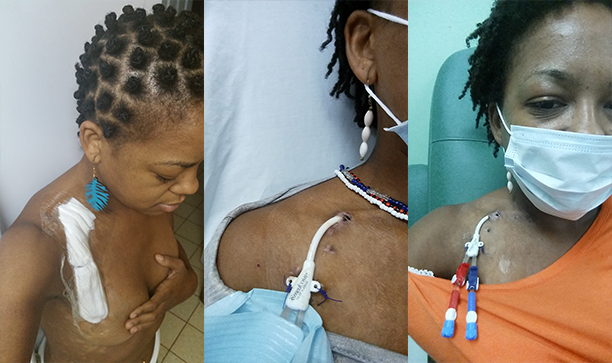My first introduction to catheters was as a teenager. I was in a car accident with my boyfriend. He broke his hip; I had a concussion and we both ended up in hospital. Although we were on different floors, on different wards, we couldn’t have been any closer. At night, we’d sneak phone calls on the hospital landline and fall asleep together. I’d feign jealousy over the nurses who got to give him sponge baths.
He had a catheter. I never saw it, but he told me how the tube came out of his head, not the head on his shoulders. Every time I thought about it, I’d blush. It must have been traumatic, but I’d make fun of his misfortune anyway. Many years later karma visited me. I had surgery on one of my ovaries. Before the operation they inserted a catheter inside of me: inside a small hole not designed for such a purpose. On both of these occasions I could laugh: The first time, because it wasn’t me; the second time, because cosmic retribution is so ridiculously unfair it is comical.
Fast forward to the onset of end stage kidney disease, when my doctor told me she wanted both catheters inserted at the same time. There was no laughter in the air.
These were not the kind of catheters I had experience with: One was a tube that would be tunnelled into my heart. The other was a tube that would be burrowed into my stomach. WTF. Both would leave me with tubes hanging like tails on the outside of my body; both would render me incapable of swimming (even if only temporarily); both would force me to reach new levels of self-love. To my doctor, it made perfect sense to insert both catheters during the one surgery.
To administer dialysis you need an access point. For haemodialysis I needed a permcath; a tube would be inserted into my chest and threaded through a major artery all the way to my heart. Through these tubes, a machine would draw my blood out, clean it and return it.
For peritoneal dialysis, which is another form of dialysis I was considering, I needed a PD catheter. This tube would be inserted into my stomach. It would have a long tail that I’d have to tape down on the outside of my body. Through these tubes, I would somehow self administer dialysis using my stomach lining as a filter.
These catheters are so sensitive to the risk of infection, you can’t get them wet. I didn’t know this at the time, but another patient who got an infection ended up in hospital for six months on death’s doorstep. The permcath is temporary, but I wouldn’t even be able to shower while it was in. The PD catheter is pretty much permanent; not even Google could give me a straight answer on whether I could swim or not once the surgical wound healed around the catheter.
But it wasn’t the infections that concerned me the most. I couldn’t stand the thought of being kept away from the water indefinitely. Imagine me never being able to jump into a blue hole again; never being able to lie in the sand and have the waves wash over my body; never being able to somersaults underwater and play in Yemaya’s aquatic playground. That was a new life I couldn’t bare being thrust on me.
Plus, I couldn’t figure out how to love myself with these false appendages. I couldn’t picture myself naked with tubes hanging from my body and feeling beautiful.
My surgery was only days away and I had to decide, one catheter or two. My doctor wanted to kill two birds with one stone. I wanted none of it.
Emotionally, it was just too much, too fast. I decided on one catheter, the permcath. The thought of undergoing a second surgery (notwithstanding the added expense) was simply more bearable than the thought of two catheters; two sets of tubes; two tails all at once.
There were more decisions to make. Each one added to my fear of dialysis.
